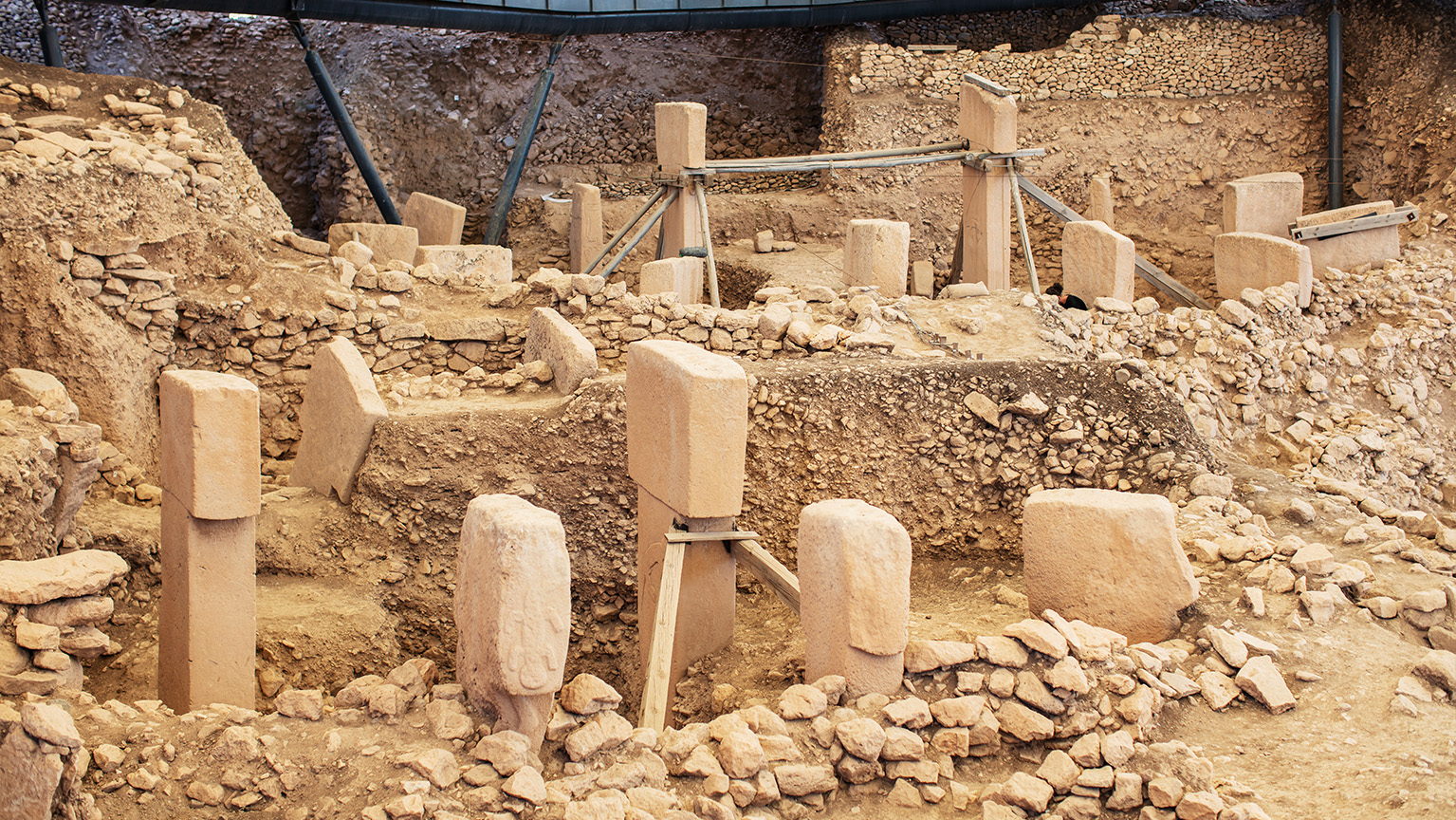1. What is Göbeklitepe and where is it located?
Göbeklitepe is an early Neolithic archaeological site located approximately 20 kilometers northeast of Şanlıurfa, Turkey. Situated on the summit of the Germuş Mountains at 770 meters above sea level, Göbeklitepe dates back to 9600-7750 BCE. Known as one of the world's oldest monumental structures, this site challenges traditional views of early human settlement and cultural development. Built by hunter-gatherer communities, Göbeklitepe offers unique insights into humanity's transition to more complex social structures.

2. How was Göbeklitepe discovered?
Göbeklitepe was first identified during surface surveys in the 1960s, conducted jointly by Istanbul University and the University of Chicago. The discovery of flint artifacts scattered across the mound suggested the site's Neolithic significance. Excavations began under Harald Hauptmann and Klaus Schmidt from the German Archaeological Institute and continued until 2014. After Klaus Schmidt's passing, the Şanlıurfa Archaeology Museum took over the research. Since 2019, Prof. Dr. Necmi Karul of Istanbul University has led the ongoing excavations. Dr. Lee Clare has been the Coordinator of Research and Fieldwork of the German Archaeological Institute since 2014. These efforts have revealed Göbeklitepe's monumental architecture and its profound significance for human history.

3. Why is Göbeklitepe important?
Göbeklitepe is one of the most significant archaeological discoveries of the modern era, challenging conventional theories about the origins of settled life. According to Prof. Dr. Necmi Karul, findings at Göbeklitepe suggest that agriculture and animal husbandry emerged as results, not causes, of human settlement.
The site's T-shaped pillars and intricate carvings highlight the advanced organizational skills and symbolic thinking of Neolithic societies. This evidence demonstrates that communities 12,000 years ago possessed advanced technological, artistic, and architectural knowledge, as well as complex social structures.

4. Who lived at Göbeklitepe?
The communities at Göbeklitepe were hunter-gatherer groups transitioning towards settled life around 12,000 years ago. Although they had not yet adopted full-scale agriculture or animal husbandry, they demonstrated advanced social organization by constructing monumental structures.
Rather than being classified by a specific "race," these groups are understood as part of early Holocene hunter-gatherer societies. They are believed to be genetically linked to populations in the broader Middle East and Levant regions. Göbeklitepe is thought to have been a gathering site for ritual and social purposes rather than a permanent settlement.

5. Was Göbeklitepe a temple?
The description of Göbeklitepe as a "temple" is debated among scholars. According to Prof. Dr. Necmi Karul, viewing these structures as temples may oversimplify the lifestyle of the era's communities. Instead, Göbeklitepe is believed to have served as a gathering place for rituals, social interaction, and cooperative activities among hunter-gatherer groups. Its purpose was likely shaped by the social and symbolic needs of its builders, rather than religious worship in the modern sense.

6. What structures and carvings are found at Göbeklitepe?
Göbeklitepe features circular and oval monumental structures surrounded by massive T-shaped limestone pillars, some reaching heights of 5.5 meters and weighing several tons. These structures demonstrate advanced stonemasonry techniques.
The pillars are adorned with carvings of animals such as snakes, foxes, wild boars, cranes, and vultures, showcasing the symbolic and artistic expressions of Neolithic societies. These carvings highlight the deep connection between humans and nature at the time.

7. How were the T-shaped pillars at Göbeklitepe constructed?
The pillars were quarried from nearby limestone outcrops and carefully crafted using natural tools. Their transportation and placement demonstrate the advanced engineering and organizational skills of the Neolithic builders. The integration of the pillars into sockets carved into the bedrock further highlights the careful planning and expertise involved in the construction process.

8. What is Göbeklitepe's UNESCO World Heritage status?
In 2018, Göbeklitepe was designated a UNESCO World Heritage Site, recognizing its unique contribution to human history. UNESCO describes it as one of the most important cultural landmarks of early human civilization.
This designation brings international responsibility to protect and manage Göbeklitepe sustainably. It also ensures that the site remains a valuable legacy for future generations. UNESCO status has increased global interest in Göbeklitepe, enhancing its recognition as a cultural and tourist attraction.

9. When is the best time to visit Göbeklitepe?
Göbeklitepe is open year-round, but the best times to visit are during spring (April-May) and autumn (September-October), when the weather is mild. During summer, early morning or late afternoon visits are recommended to avoid extreme heat. Winter visits require preparation for cold and windy conditions. Checking seasonal weather forecasts can help make the visit more comfortable.

10. How can you get to Göbeklitepe?
Göbeklitepe is about 20 kilometers from Şanlıurfa city center and is easily accessible by private vehicle, taxi, or public transportation. Regular bus services provided by Şanlıurfa Municipality also connect the city center to the site. Parking is available near the Göbeklitepe entrance for visitors arriving by car.
For more detailed information, visit the official Taş Tepeler website.


